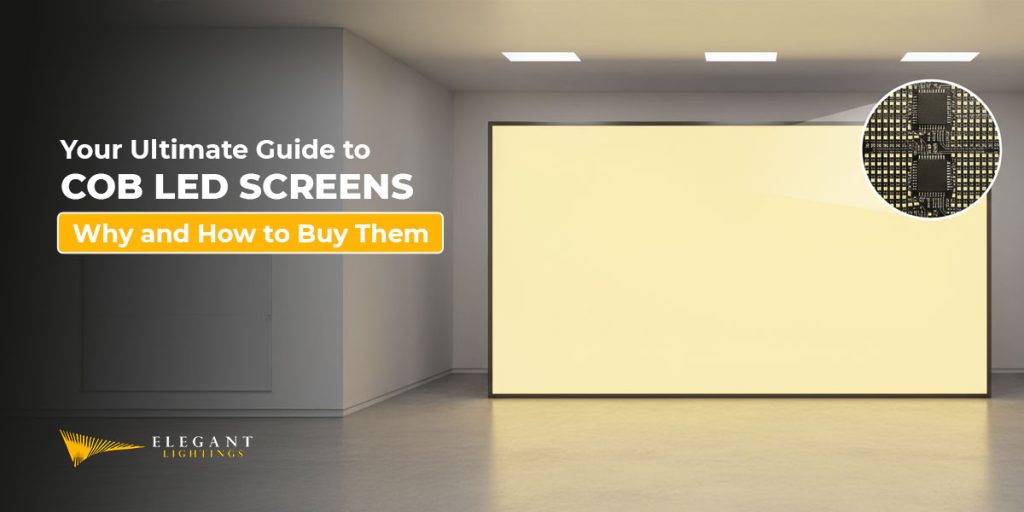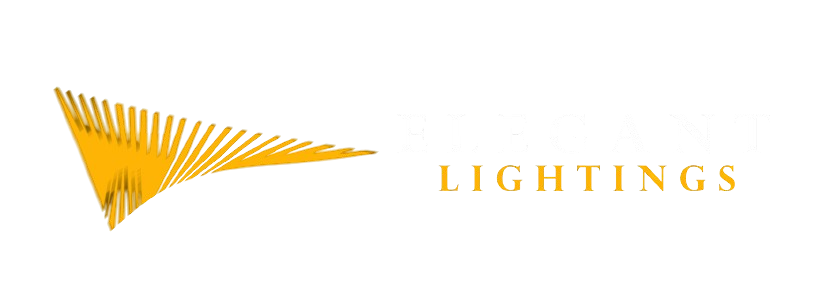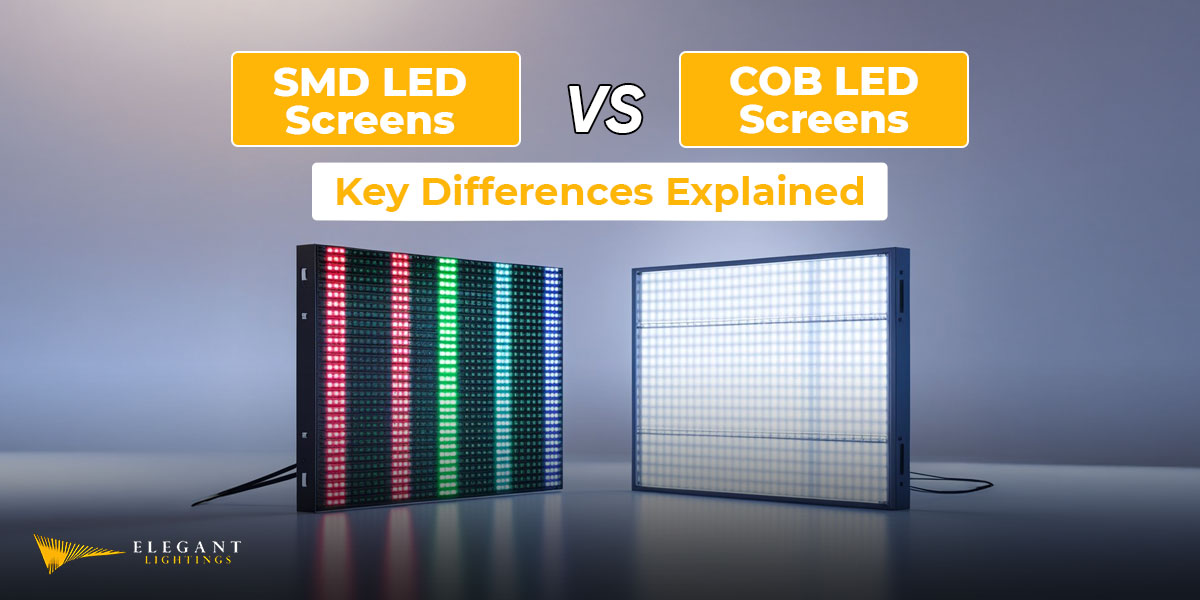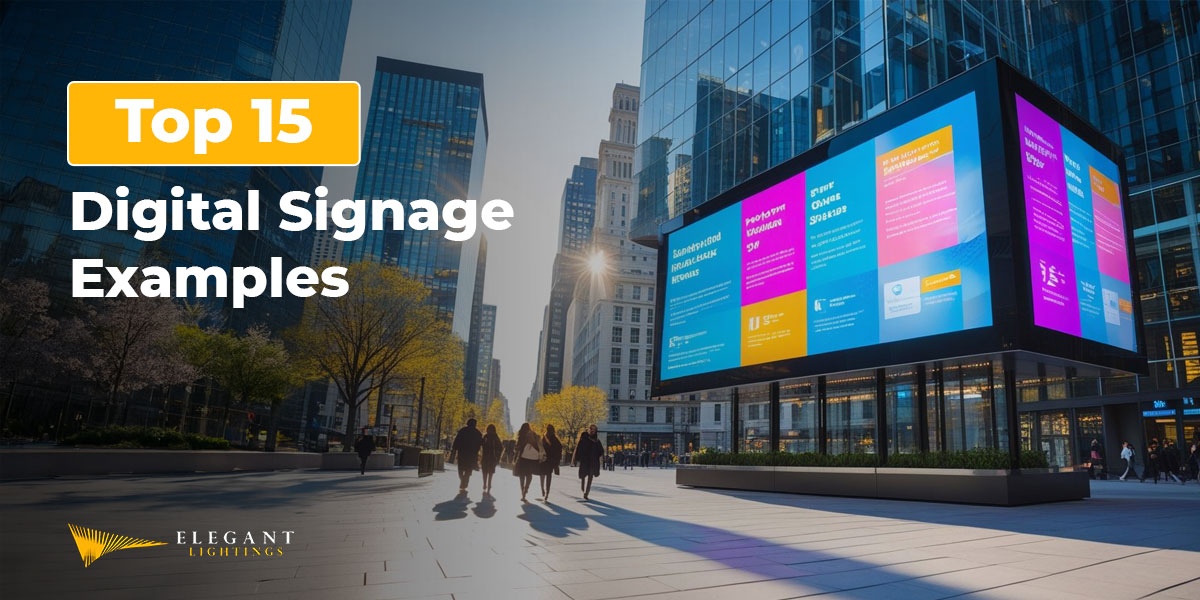In a market where 90% of all display tech will be LED-powered by 2030, most people and businesses that are switching to LED screens are still making a huge mistake.
What's on this page:
Why?
Because they’re going with Surface-Mounted LED panels rather than the future-proof Chip-on-Board LED screens! The normal (currently popular) SMDs are comparatively fragile, less durable, and (frankly) not the best solution on the market!
That’s why the COB LED market is expanding rapidly – right now, it’s valued at $2.2 billion. But by 2032? Growing at nearly 16% every single year, it’ll reach $8.4 billion! So, the global and American illumination markets are preparing for a huge shift in display tech.
And I’m here to help you understand why this is happening and how you can benefit from switching to COB LEDs. We’ll explore what COB LEDs are, how they work, why you should get them, and where to purchase them.
I’ve also included a small purchase guide to help you make the buying decision!
Let’s get started.
Ultimate Guide to COB LED Screens: Table of Contents
- What are COB LED Screens?
- Difference Between COB LED Screens and SMD LED Screens
- Why Should You Use COB LED Screens – Benefits to Expect
- What Industries Can Benefit from COB LED Screens?
- What to Keep in Mind While Purchasing COB LED Screens?
- Elegant Lightings: The Leading COB LED Screen Provider in 2025 and Beyond
- COB LED Screens: FAQs
What are COB LED Screens?
A COB LED screen, or a Chip-on-Board LED screen, is a panel in which tiny LEDs without any plastic coating are mounted directly onto a panel.
Once placed on a screen or panel, these bare LEDs are covered and protected by a single, smooth layer of epoxy resin.
As a result, you get a flat, smooth surface of high-brightness LEDs packed together to create vibrant, vivid visual displays.
So, how exactly are they different from the LED panels you see in stores & malls, on billboards, or even in places like Times Square?
I’ve broken it down in the next section!

Difference Between COB LED Screens and SMD LED Screens
The easiest way to understand COB LED screens is to distinguish them from SMD (Surface Mounted Device) LED panels:
SMD LED Panel
Think of an SMD LED screen as a floor made of individual ceramic tiles.
The whole panel is made of lots of small tiles, leaving space between them that you see in the form of lines.
That’s exactly what you’re looking at when you see a huge SMD LED Panel – the LEDs are the individual tiles that are mounted onto a surface (hence, Surface Mounted Device).
And that’s also why you can clearly see the individual LEDs – the little round shapes – when some areas of the LED Screen light up, and others don’t.
COB LED Panel
Think of a COB LED Panel as a smooth wooden surface. You usually see it as one, polished surface.
In the case of a COB LED Panel, the surface is made of epoxy resin instead of wood varnish/polish. And instead of particles of wood, COB LEDs use tiny, naked LEDs.
So, a COB LED Panel is able to display visuals with greater clarity and brightness without all the lines in between!
COB LED vs SMD LED Panel – Table of Differences
| Feature | SMD (Surface-Mounted Device) | COB (Chip-on-Board) |
| Surface | Grainy, visible gaps between pixels. | Smooth, seamless, flat surface. |
| Durability | Fragile; LEDs can be knocked off. Easily damaged. | Rugged; impact-resistant. Easy to clean with water. |
| Reliability | Higher risk of dead pixels and solder failures. | Extremely low pixel failure rate. High longevity. |
| Image Quality | Good contrast and color. | Superior contrast and color uniformity. |
| Best For | Standard digital signage and rental screens. | High-traffic areas, control rooms, broadcast, and luxury retail. |
| Cost | Low initial cost, higher maintenance, lower lifetime value. | Higher initial cost, lower lifetime maintenance. |

Why Should You Use COB LED Screens – Benefits to Expect
Let me quickly walk you through the major benefits you can expect from using COB LED Screens as your primary display technology:
1. More Stable & Reliable
Since the LEDs on a COB Screen are mounted directly, they are bonded together very strongly. This means your screen will be highly resistant to damage from impact.
Basically, COB LEDs are inherently collision-resistant!
2. Better Picture Quality
COB LED panels produce far better color uniformity and quality compared to mounted LED panels. They thus give you smoother and more consistent surfaces without tiny gaps between LEDs.
In other words, no one looking at your LEDs will be able to see any grid lines (like you can on other LED screens around today).
3. Moisture-proof & Anti-oxidation
Since COB LEDs are protected by a continuous layer of epoxy resin, they are sealed away from moisture, dust, and corrosion.
As a result, you can clean your displays with water without damaging even a single layer of the screen!
4. Anti-static
One of the best things about COB LED screens is that they’re less susceptible to damage from electrostatic discharge during handling and installation.
For example, our UT-C Series COB LEDs use a more advanced “Mini Flip Chip” version. They are extremely safe to handle, easy to install, and as easy to move when you need to – all without any risk of damaging their effectiveness.
5. Cost-Effective Integrated Display System
Another key benefit of COB LEDs, especially our UT-C series, is that you get a 3-in-1 Integrated System.
This means that the power supply, control system, and hub card are all part of the same display.
So, you get a lighter and more stable system. Plus, since all the key components are internalized, our COB LED system reduces the points of potential failure.
It also generates less heat (further lowering the chance of damage) and consumes less energy!
6. Immersive Viewing Experience
Lastly, if you want to deliver an immersive viewing experience for your audience, nothing is better than COB LEDs.
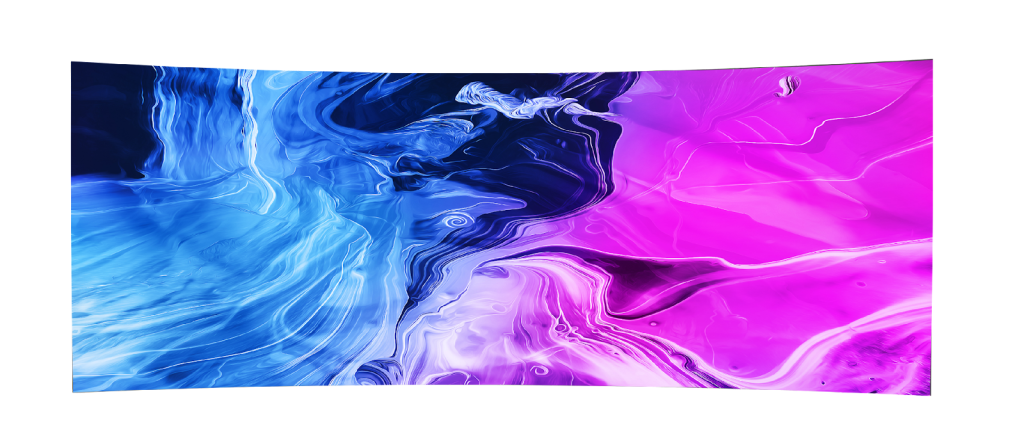
They can be assembled to create a gently curved video wall, perfect for vibrant displays required in control rooms, museums, arenas, home theaters, hotels, expos, and special events (weddings & parties).
You can also adjust the panel angles to deliver the perfect viewing geometry. Plus, the ultra-high contrast helps you show more vivid, dynamic, and realistic images. This is especially important for HDR (High Dynamic Range) visuals.
What Industries Can Benefit from COB LED Screens?
Next, let’s explore the key industries that can benefit from switching to COB LED technology in 2025 and beyond:
- Retail: COB LEDs are perfect for advertising products with high brightness and color accuracy. It’ll help you attract customers, engage them for longer periods, and improve product displays!
- Entertainment: The vastly superior image quality of COB LED panels makes them ideal for displaying seamless visuals on stages, during concerts, and in studios & galleries. If you’re looking to enhance your viewers’ event experience, COB LEDs are your perfect solution.
- Sports Venues: Since COB LEDs offer both high durability and brightness, they’re also ideal for outdoor and indoor stadiums. They ensure clear visibility under all ambient lighting conditions, whether you want to show replays or live streams!
- Corporate/Conference Rooms: Custom COB LEDs can help you view/show presentations and video conferences in HD quality with wide viewing angles and minimal maintenance.
- Control & Command Centers: COB LEDs can be operational 24/7 without compromising on reliability. The minimal downtime of COB screens thus makes them highly suited for monitoring and security applications.
Apart from this, COB LEDs are also the best display technology for home theater systems, LED signage, and any other area where you’re currently using plain, surface-mounted LED screens!
What to Keep in Mind While Purchasing COB LED Screens?
In this section, I’ve outlined the 8 key factors you should consider while purchasing your COB LED Screens. They also apply to situations where you’re working with an LED solution provider to create custom COB LED screens:
- Pixel Pitch: Determines image clarity; smaller pitch (e.g., P0.9–P1.5) is ideal for close-viewing environments, while higher pitch is better-suited to outdoor displays.
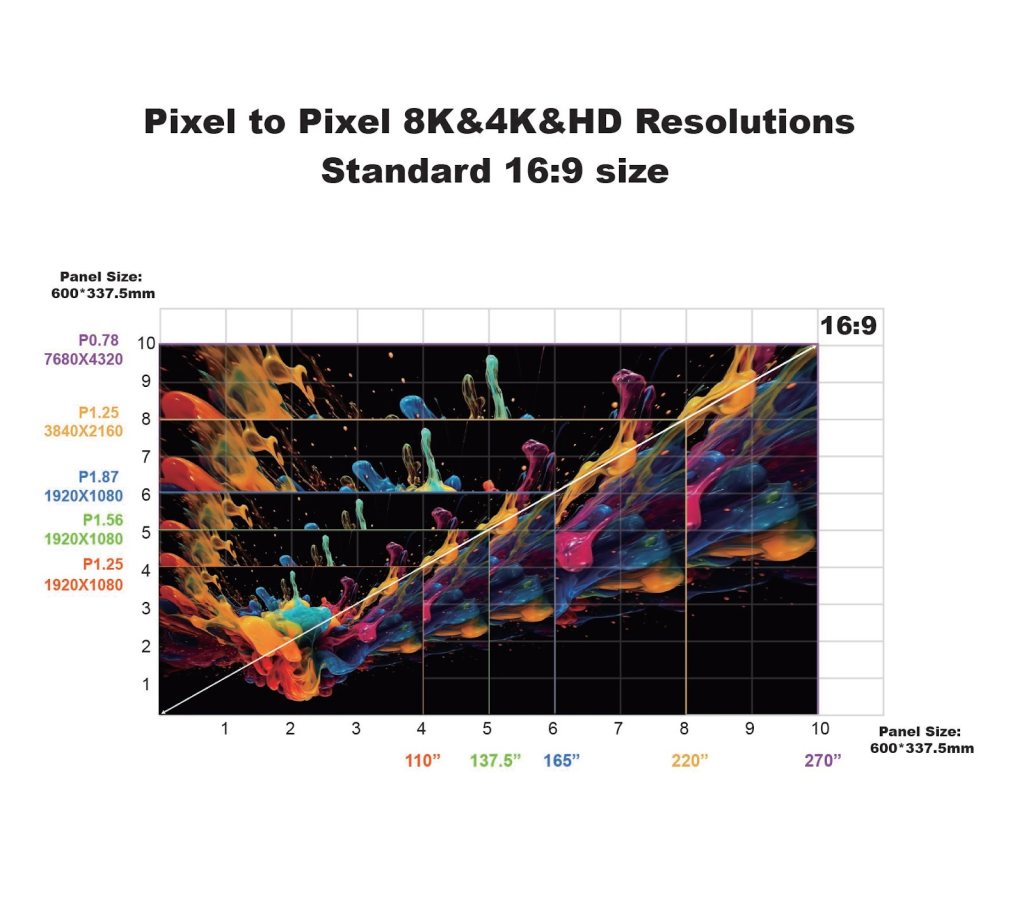
- Brightness: Usually measured in “nits”; indoor applications require 500–1,200 nits, while outdoor COB LED screens might require even higher levels.
- Contrast Ratio: Higher ratios (e.g., 20,000:1) deliver deeper blacks and sharper visuals. This factor is particularly important if you need a COB LED screen for an outdoors environment with changing ambient conditions.
- Energy Efficiency: Look for high lumens per watt (lm/W) to reduce operational costs. For example, our UT-C series offers ultra-efficient displays with its integrated COB system.
- Durability & Protection: IP ratings (e.g., IP65 for outdoor use) ensure resistance to dust, moisture, and physical impact.
- Heat Dissipation: Efficient thermal management extends lifespan and maintains performance.
- Compatibility: Make sure that the COB screens are compatible with your existing control systems. I also suggest asking your supplier if the panels will support 4K input.
- Warranty & Support: Opt for products with at least 3–5 years of warranty and reliable after-sales service.
Elegant Lightings: The Leading COB LED Screen Provider in 2025 and Beyond
Switching to COB LED panels can light up your display systems for the next 10-12 years.
That’s because the typical COB screen can last up to 100,000 hours with routine maintenance.
In other words, you can genuinely revolutionize the way you portray your business, showcase your events, or deliver images for a decade with minimal investment.
And if you’re either looking for COB LED screens or just want to try one out to see if it actually benefits your business, we’re here to help!
At Elegant Lightings, we’ve built a legacy based on efficient and effective lighting systems that illuminate enterprises and their work.
In 2025 and beyond, we’re pushing the boundaries of display solutions with ultra-sophisticated systems like the UT-C series.
Reach out to us to find out how we can help you switch to the future of enterprise illumination today!
COB LED Screens: FAQs
1. What does COB stand for in LED screens?
Chip-on-Board. It means the tiny LED chips are mounted directly onto the circuit board and sealed with a smooth, protective resin layer for a seamless image.
2. How is a COB screen better than a standard SMD LED screen?
COB screens are far more durable, impact-resistant, and have a smoother surface with no visible gaps between pixels, offering superior image quality and reliability.
3. Are COB LED screens easy to maintain?
Yes, their seamless, resin-covered surface is dustproof and moisture-resistant, making them very easy to clean safely with water and reducing long-term maintenance.
4. Where are COB LED screens most commonly used?
They are ideal for high-end, high-traffic applications like control rooms, broadcast studios, luxury retail, corporate lobbies, and anywhere superior image quality is critical.
5. Why is the initial cost of COB higher?
The advanced manufacturing process and integrated components cost more upfront but lead to lower lifetime costs due to exceptional durability and reduced maintenance.


